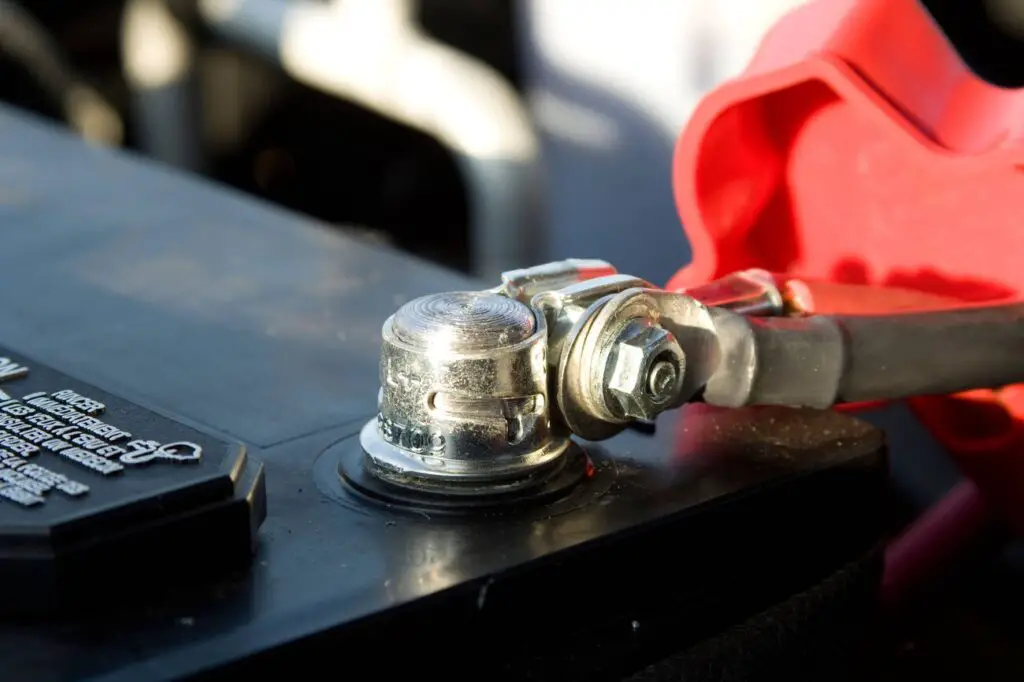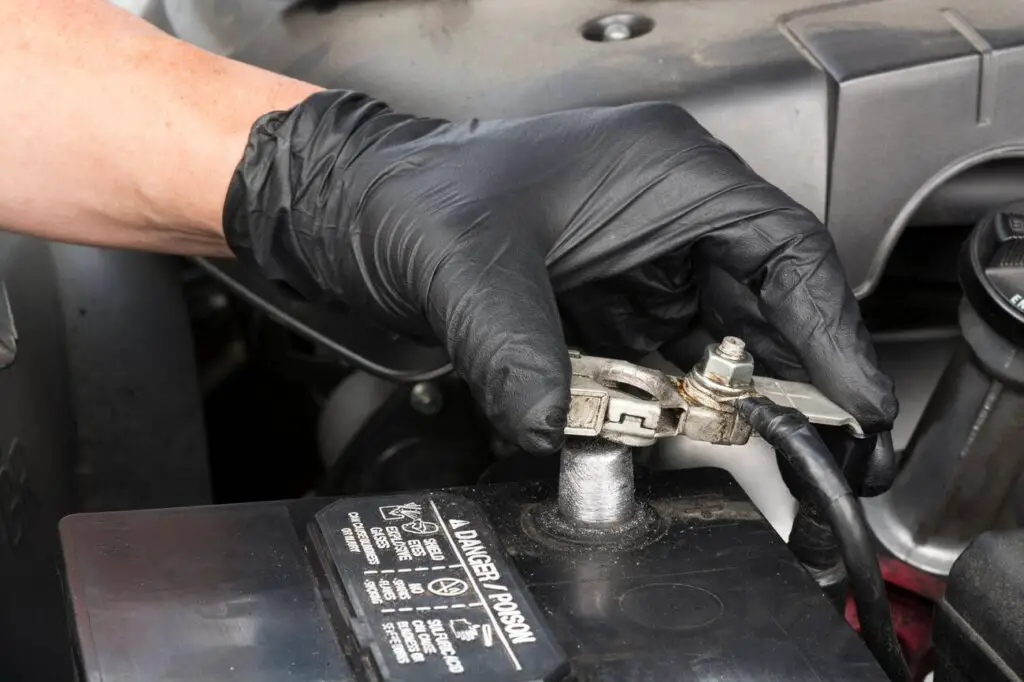When it comes to vehicle maintenance, one of the simplest yet essential tasks is disconnecting the car battery. While it may seem straightforward, doing it incorrectly can lead to a series of issues-some as minor as a spark or as major as damaging your car’s electrical system or even personal injury. One of the most frequently asked questions in this context is: which battery terminal to disconnect first?
In this comprehensive guide, we will walk through the reasons behind disconnecting a particular terminal first, the science behind it, the potential consequences of doing it wrong, and frequently asked questions (FAQs) related to battery handling and safety.

Contents
Battery Terminals: Positive and Negative
Car batteries have two terminals:
- Positive Terminal (+): Usually marked with a plus sign (+) and connected to the car’s electrical system.
- Negative Terminal (-): Often marked with a minus sign (-) and connected to the vehicle’s chassis or body (grounded).
These two terminals complete the electrical circuit in your vehicle, powering everything from the starter to the lights and various electronic control modules.
Importance of Disconnecting the Battery Properly
Disconnecting the battery improperly can lead to:
- Electrical Short Circuits: This can result in damaging the car’s sensitive electrical components.
- Sparks: While sparks may seem trivial, they can ignite fumes, especially if you are working near fuel lines or in enclosed spaces.
- Damage to the Battery or Alternator: A sudden disconnection can overload circuits, potentially damaging the battery or the alternator.
- Personal Safety: Mishandling could lead to electrical shocks, burns, or even fires.
Which Battery Terminal to Disconnect First?
Always disconnect the negative (-) terminal first.
Why the Negative Terminal First?
Disconnecting the negative battery terminal first is important for safety and to prevent electrical issues. Here’s why:
- Prevent Short Circuits: The negative terminal is connected to the vehicle’s chassis, effectively grounding the entire car. By disconnecting it first, you eliminate the grounding connection and prevent the possibility of a short circuit. If you accidentally touch the chassis or any metal part of the car with a tool, you won’t create a closed loop that could cause sparks or damage the electrical system.
- Safety: When the negative terminal is disconnected first, the car’s electrical circuit is broken, minimizing the risk of shorting the battery to the ground. In contrast, if the positive terminal is disconnected first and the wrench touches any part of the chassis, it can create a complete circuit, resulting in sparks or an electrical shock.
- Protecting Sensitive Electronics: Modern vehicles are equipped with a plethora of electronics, such as engine control units (ECU), infotainment systems, and sensors. Disconnecting the negative terminal first reduces the risk of damaging these sensitive electronics due to power surges or short circuits.

How to Safely Disconnect a Car Battery
Disconnecting a car battery is a common task that many vehicle owners might need to undertake, whether for maintenance, replacement, or troubleshooting electrical issues. While it may seem straightforward, doing it safely is crucial to avoid injury or damage to your vehicle’s electrical system. Here is a guide of how to disconnect a car battery safely
What Happens if Disconnect the Positive Terminal First?
If you disconnect the positive terminal first, you’re risking a potential short circuit. Here’s why:
- Accidental Grounding: The positive terminal is still connected to the electrical system, and the negative terminal is connected to the chassis. If your wrench accidentally touches any part of the chassis while you are loosening the positive terminal, it will create a direct short to ground. This could lead to a massive spark, which can cause injury or damage the car’s electrical components.
- Power Surge: Disconnecting the positive terminal first can cause a surge of electricity through the system, which may damage the alternator, starter, or other sensitive electronics.
In summary, always remove the negative terminal first to break the electrical circuit safely.
Reconnecting the Battery: The Right Way
When it’s time to reconnect the battery, reverse the order:
- Connect the positive terminal first.
- Connect the negative terminal last.
The reason for this sequence is that, once again, you want to reduce the risk of short circuits. The chassis of the car remains grounded, and by connecting the positive terminal first, you avoid the potential of shorting the positive terminal to ground via the chassis.
Common Battery-Related Mistakes to Avoid
Many car owners make mistakes that can lead to premature battery failure or safety hazards. Here are some common battery-related mistakes to avoid:
- Not wearing protective gear: Always use gloves and eyewear to protect against battery acid and sparks.
- Crossing terminals: Never let the positive and negative cables touch each other, as this can cause a dangerous short circuit.
- Leaving accessories on: Always ensure the vehicle is off before disconnecting the battery, as leaving accessories on can lead to sparks and potentially damage the car’s electrical system.
Maintaining Car Battery: Tips and Best Practices
A well-maintained car battery is necessary for the overall performance and reliability of your vehicle. Regular maintenance can extend its lifespan and help prevent unexpected breakdowns. Here are some essential tips for maintaining your car battery effectively.
- Regular Inspection: Check your battery terminals for corrosion, which can impede the connection and reduce battery efficiency. Clean the terminals with a wire brush if necessary.
- Check Voltage: A healthy car battery should have a voltage of around 12.6V when fully charged. Consider using a voltmeter to regularly check the health of your battery.
- Battery Load Test: Take your vehicle to a mechanic for a load test to ensure that your battery is still holding a charge properly, especially before winter months when cold weather can reduce battery performance.
Frequently Asked Questions
Here are some FAQs about disconnecting car battery terminals –
Q: What happens if I disconnect the positive terminal first?
A: Disconnecting the positive terminal first increases the risk of shorting the circuit if a tool accidentally touches the chassis. This can cause sparks or even damage the vehicle’s electronics.
Do I need to disconnect both terminals to work on the car?
A: It depends on the task, but in most cases, disconnecting only the negative terminal is sufficient. However, if you’re removing the battery or doing extensive electrical work, disconnect both terminals for added safety.
Q: Can disconnecting the battery reset the car’s computer?
A: Yes, disconnecting the battery may reset the vehicle’s onboard computer (ECU) and erase stored codes or settings, such as radio presets. However, this may also erase error codes, so make sure to address any issues before disconnecting.
Q: Is it safe to disconnect the battery when the car is running?
A: No, never disconnect the battery while the car is running. Doing so can cause a surge of electrical current, potentially damaging the alternator, electrical system, or other components.
Q: How long should I wait after disconnecting the battery before working on the vehicle?
A: After disconnecting the battery, it’s advisable to wait a few minutes to ensure the car’s capacitors discharge fully. This reduces the risk of any residual electricity damaging sensitive electronics.
Conclusion
When working on your car, something as simple as disconnecting the battery requires caution and proper knowledge. Always remember to disconnect the negative terminal first to ensure safety and avoid any electrical mishaps. Following the right procedures protects not only your vehicle’s electrical components but also your personal safety.